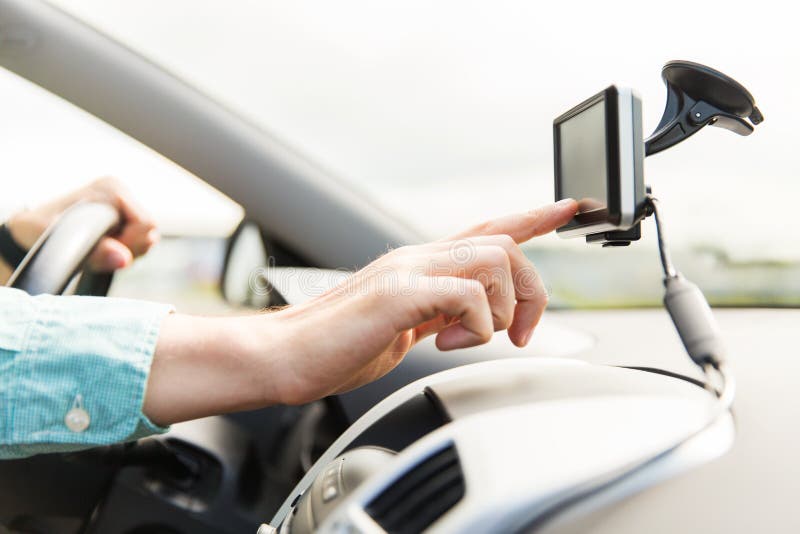Is It Safe to Use a GPS Navigator While Driving?
Navigating unfamiliar roads can be stressful, and GPS navigators have become incredibly popular tools for drivers. But is using a GPS while driving truly safe? The short answer is: it can be, but it depends heavily on how you use it. This article will delve into the safety considerations surrounding GPS navigation, offering practical advice to help you make informed decisions and stay safe on the road.
The Distracted Driving Dilemma: More Than Just a GPS

Before we focus specifically on GPS units, let’s acknowledge the larger issue: distracted driving. Using a GPS contributes to distracted driving, but it’s far from the only culprit. Texting, talking on the phone (even hands-free), eating, adjusting the radio, or even engaging in intense conversations with passengers all compete for your attention and can significantly impair your driving ability. The National Highway Traffic Safety Administration (NHTSA) highlights distracted driving as a major cause of accidents, and it’s crucial to understand that any activity that takes your focus away from the road is a potential hazard.
How GPS Navigators Can Be a Safety Hazard
While GPS navigation offers convenience, it introduces specific risks:
- Visual distraction: Looking down at the screen to check directions takes your eyes off the road, even for a few seconds. Those few seconds can be the difference between avoiding a collision and causing a serious accident.
- Cognitive distraction: Processing directions, interpreting unfamiliar street names, and figuring out upcoming turns requires significant cognitive processing power. This mental effort can impair your reaction time and decision-making skills behind the wheel.
- Manual distraction: Adjusting the volume, changing settings, or inputting new destinations on the GPS can involve taking your hands off the wheel, which is obviously unsafe.
Minimizing Risks: Safe GPS Navigation Practices
Fortunately, there are steps you can take to mitigate the risks associated with using a GPS while driving:
- Plan your route beforehand: Program your destination *before* you start driving. This minimizes the need to interact with the device while you’re in motion.
- Use voice navigation: Most GPS systems offer voice guidance, allowing you to keep your eyes on the road while receiving directions. Adjust the volume to a level where you can easily hear the instructions but it doesn’t overwhelm other sounds.
- Mount your GPS securely: A securely mounted GPS is less likely to be a distraction. Avoid placing it in a location that requires you to reach or stretch to see it.
- Keep it simple: Avoid complex route planning or frequent changes while driving. Stick to the simplest and safest route.
- Pull over if needed: If you need to make a significant change to your route, find a safe place to pull over before doing so. Safety should always be your top priority.
- Consider alternative navigation options: Some vehicles offer built-in navigation systems that are seamlessly integrated and often easier to use safely.
- Stay updated: Ensure your GPS maps are up to date to avoid outdated information that could lead you astray.
Alternatives to GPS Navigation

While GPS navigators offer unparalleled convenience, they aren’t the only option. Consider these alternatives:
- Paper maps: While old-school, paper maps eliminate the distractions of a digital device.
- Passenger navigation: If you have a passenger, have them handle navigation.
- Landmark-based navigation: Familiarize yourself with the route beforehand, relying on landmarks instead of a GPS.
The Bottom Line: Safe Use is Key

GPS navigators can be incredibly useful tools for drivers, but they are not without risk. By following safe practices and prioritizing attentiveness, you can significantly reduce the chances of an accident. Remember, your safety, and the safety of others on the road, is paramount. Never let the convenience of a GPS outweigh the importance of safe driving habits.
Beyond the GPS: Comprehensive Driving Safety

Safe driving extends far beyond just the use of a GPS. Always ensure you’re well-rested before embarking on a long journey, maintain your vehicle according to the manufacturer’s recommendations, and be mindful of road conditions and other drivers. Defensive driving practices are crucial in keeping you and those around you safe on the road.
Ultimately, the decision of whether or not to use a GPS while driving is a personal one. But informed decisions based on a clear understanding of the risks and the adoption of safe practices can drastically improve your safety on the road.


